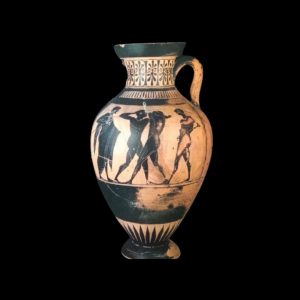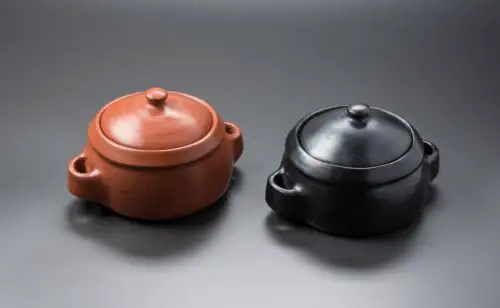Ráquira, La Chamba, and Carmen de Viboral are three communities that, thanks to their great talent in working with clay, make pottery a very important tradition in Colombia and have also gained international fame.
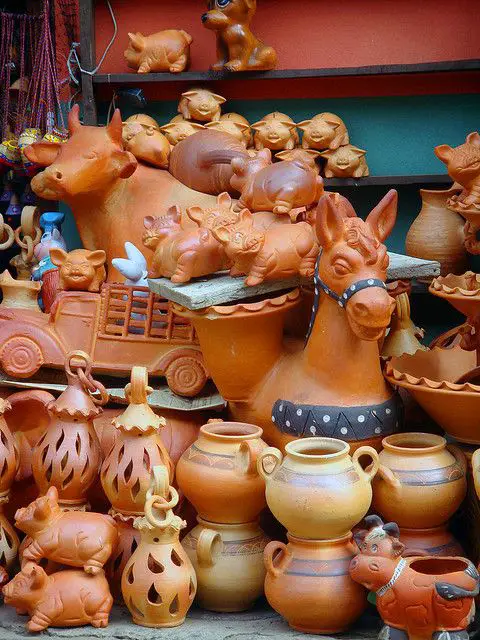
Table of Contents
History of Pottery in Colombia
About 6,000 years ago, the first traces of pottery were found in San Jacinto, a municipality in the department of Bolivar. This makes Colombia one of the American countries with the oldest ceramics.
Over the years, different ceramic techniques from different parts of the world spread to different regions of the country. For example in departments like Tolima , Huila , Boyacá and Antioquia.
In each of these places, the tradition of native and traditional ceramics has been maintained, but at the same time, new techniques have been applied by the artisans, resulting in contemporary pieces of ceramics.
In the 19th and 20th centuries, indigenous and traditional techniques began to be combined to create pieces that were part of everyday life in Colombian homes. Nowadays pottery is made in every part of the country.
Ráquira
Ráquira, the capital of Colombian handicrafts, as it is called due to the great talent of its artisans, is a municipality in the department of Boyacá, in the Andean region. Thanks to its handicrafts, it is one of the main tourist destinations in Boyacá and in the whole country.
From the very beginning of this community, pottery has been a very important pillar, since its origins as a people, and in pottery are the Muisca. These indigenous people populated the department of Boyacá along with the department of Cundinamarca.
Pottery and handicrafts were so important to the residents from the beginning that Ráquira used to be called ” Ruaquira “. This term is composed of the Chibcha words ” rua ” (pot) and ” quira ” (village), meaning “village of potters” or “village of pots”.
All the knowledge and techniques that the people of Ráquira inherited from the Muisca, as well as the trades and customs, have evolved over time, but this is what has made Ráquira such an important and recognized tourist destination.
In 1936, when the first ceramics school was founded in Ráquira, innovation also became a very important pillar, because the pots in the shape of the Muisca Indians, ashtrays with the head of a Redskin Indian, tea and coffee sets, small Fishes with colorless forms, churches, vases, and figures of animals. Shapes that weren’t so common in the past.
The fact that the artisans of Ráquira are able to produce all three types of ceramics is thanks to the fact that the artisan families have passed on their knowledge from generation to generation without forgetting their roots.
As this is a city that throughout its history has been dedicated to ceramics, the competition between the numerous shops is very intense, since all the shops are next to each other and most of them sell the same pieces.
Why visit Ráquira
- Ráquira is known for its great talent in working with clay.
- You can take part in artisan workshops to make pieces with your own hands and have a great time with your family or friends.
- You can learn more about the history and origins of these people, the Muisca Indians.
- Celebrate the Festival de Cargueros , which is very similar to the Festival de las Silleteros in Medellín. In this case, however, the young people do not carry flowers on their backs, but the best ceramic works of art.
- The city is very colorful and is ideal for a stroll to enjoy the architecture.
- Near the village, there is a very old dessert called La Candelaria.
- The blue fountains are very close to the village. You can walk or horseback ride there to add to the experience.
What pieces do they make?
Since the city practically lives from ceramics, there is a great variety of objects here, e.g. B. Traditional pieces like pots, buckets, and cups. But they also make pieces of Muisca origin, e.g. B. animal figures such as frogs, toads, and chickens. In addition, the city’s landmarks such as the clay horse, the virgins and the bull squares.
What materials do they use?
The main material used in Ráquira is clay. It is the favorite material of artisans, although the native people used other materials in the past.

The Chamba
La Chamba is another type of ceramic very well known in Colombia, one could even say the best known because all its pieces have that strong black color that characterizes them.
The pieces made bear the same name as their village. Located in Tolima, La Chamba, like Ráquira, is a community known for its pottery.
Her pieces move between the indigenous and the traditional pottery art and this is very interesting because every single object they reflect the heritage, the image of nature, and the beliefs of the ancestors.
Pottery is an activity that these artisans have been practicing for more than three hundred years and has become a tradition that conveys the history and culture of their region through clay.
Around 1937, La Chamba pottery began to be recognized nationally, so its pieces were used in the various typical dishes of the country.
Like everything, La Chamba has evolved over time, resulting in the loss of some of the aboriginal symbolic elements. The good thing is that the great technique and shapes of the pieces are still the key to such unique and eye-catching objects.
Why visit La Chamba
- Pottery is 80% of the livelihood of the villagers.
- Most households in La Chamba have their own workshop at home.
- In 2019, thanks to their tradition and quality, they received their own designation of origin.
- You can visit shops or workshops to see La Chamba pottery up close.
What pieces do they make?
The most famous pieces made in La Chamba are the pots and plates of various sizes and shapes but also pieces like the múcura and small clay chickens.
We have all eaten from a La Chamba plate at some point in our lives. Picture thick black pottery and you know you’ve already encountered one of the beautiful pieces they make in Tolima.
What materials do they use?
In La Chamba, 3 main materials are used to make the pieces: dark smooth clay, gray sandy clay, and red clay. Sometimes these clays, depending on how they are prepared, resulting in rustic pieces commonly used for food or perfect pieces sold abroad.
What gives these objects the particular black color is the cagajón (donkey or horse manure) or the rice husks that are most commonly used to blacken the pieces.
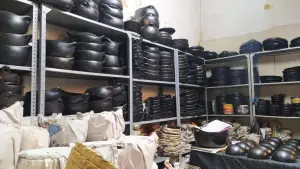
El Carmen de Viboral
After El Carmen de Viboral, pottery came in the 1930s thanks to the Spaniards who came to Antioquia with all their knowledge and techniques. This tradition has become one of the most important sources of social, cultural, and economic development of this city.
As you have seen in this blog, pottery making is one of the most important activities in the country as it has become a livelihood for thousands of families.
For El Carmen de Viboral it is not the only source of income, but it is the most important since they also have a wide variety of agricultural products. Tourism has also developed in this municipality thanks to its handicraft workshops and potteries.
The knowledge of the Spaniards and the presence of water resources for energy production led to a successful expansion and the creation of numerous ceramic factories. The growth was so great that the largest company even had 300 employees.
Initially, the earthenware made in El Carmen de Viboral was white, but over the years backgrounds or faint lines of color were incorporated around the edges.
El Carmen’s unique decoration began, which clearly identifies her pieces.
These decorations, which are 100% handmade one by one, are known as ” pintas “. And most often these pintas are flowers like hydrangeas, pansies, roses, and many more.
The fact that no two pieces are alike because they are hand-painted makes them worthy of recognition – and praise – for all arts and crafts lovers.
Why visit El Carmen de Viboral
- Through a simple piece of white ceramic, decorators manage to capture their perception of nature and the diversity they find in their community.
- It is one of the cities in the country with the greatest knowledge of ceramics.
- You can visit all the pottery shops and factories in El Carmen.
- You can learn even more about this art in the ceramics museum.
- You can walk to the Paseo del Angel, a shopping street covered with colorful umbrellas, at the end of which you will find a ceramic mural depicting the figure of two wings.
- It’s perfect for taking some nice photos.
What pieces do they make?
There will be e.g. B. plates, bowls, or vases.
What materials do they use?
Most pieces are made using the casting process. This means that the liquid clay is filled into molds and the following materials are usually used: clay, feldspar, kaolin, limestone, and quartz.
These raw materials are extracted from various mines in communities such as La Unión and Llano Grande and in various areas of El Carmen de Viboral.
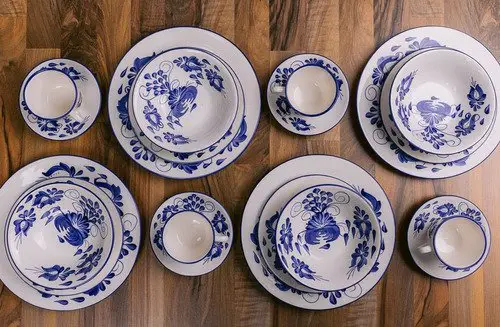
Ráquira, La Chamba, and El Carmen de Viboral are cities full of art and talented people who create unique and beautiful items. So what are you waiting for to organize a trip to any of these 3 communities and learn all about ceramics in Colombia?

